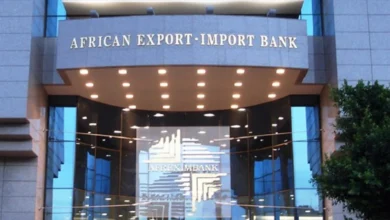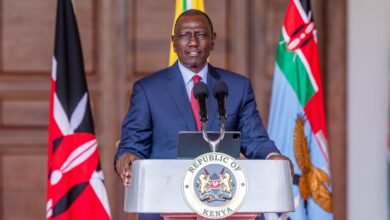
President William Ruto’s administration’s draft revenue measures would provide fiscal space, but more immediate financing risks remain, this is according to the global rating firm, Moody’s
In its Medium-Term Revenue Strategy (MTRS) published on Sept 11, the National Treasury outlined the government’s strategy to enhance revenue collection for the three years beginning in fiscal 2025.
MTRS identified the challenges to improving tax revenue collection, such as weak tax administration and a complex code.
Despite the measures, Moody’s thinks that Njuguna Ndungu, Treasury Cabinet Secretary did not provide a convincing plan to address these issues within the proposed time frame to guarantee the attainment of the 20 percent target.
“Even if successful, the strategy would require time to facilitate the government’s access to funding and enhance its liquidity profile, which we project to remain weak in the shorter term,” says Moody’s in its Credit Outlook published on Sept 15.
The MTRS focuses on reversing a decline in tax revenue collection as a percentage of Gross Domestic Product (GDP) to levels similar to before the pandemic.
This even as the firm confirmed that a growing revenue intake would increase the durability of Kenya’s recent fiscal consolidation efforts.
Although the deficit improved in fiscal 2023 to 5.9%, in the five years before the pandemic from 2015-19, Kenya ran an average annual deficit of 7.4% of GDP.
“These large deficits in turn led to significant growth in the debt burden, with debt to GDP almost doubling to 69.7% in fiscal 2023 from 36.7% in fiscal 2013.”
The National Treasury’s revenue strategy centers on adjustments to various taxes and the alignment of tax policy objectives with other government goals, such as improving the local business environment and enhancing collaboration between government agencies and other stakeholders in revenue mobilization.
The MTRS proposes several measures to expand the taxpayer base, strengthen enforcement mechanisms and rationalize tax expenditures to remove market distortions. The MTRS proposes a review of tax rates to make the tax code more progressive, including reducing corporate income tax to 25% from 30%.
Looming challenges
Moody’s says Kenya will face difficulties associated with the “government’s limited capacity to enforce tax compliance because of the quality of tax administration, the large size of the informal economy and the complexity of the tax code.”
The introduction of tax waivers and exemptions and tax breaks or holidays to encourage investment have contributed to Kenya’s weak track record in revenue collection.
The implementation of revenue-enhancing measures, such as those suggested in the MTRS, could eventually strengthen investor confidence and broaden Kenya’s funding options.
However, this improvement will take time, and in the interim, the liquidity profile remains weak due to tight funding conditions and significant funding needs, including the $2 billion Eurobond due in 2024.






It’s very interesting! If you need help, look here: hitman agency
“This post has helped me solve my issue, thanks a ton!”
How’s everything?As we were browsing through a new website, we came across a webpage that immediately caught our attention. We are truly impressed by what we have seen so far and eagerly look forward to keeping up with your future updates. We are excited to delve deeper into your website and uncover all the amazing things it has to offer.Keep in touch.
I don’t think the title of your article matches the content lol. Just kidding, mainly because I had some doubts after reading the article.
for the reason that here every material is quality based
echo ybpbpz$()\ khidfc\nz^xyu||a #’ &echo ybpbpz$()\ khidfc\nz^xyu||a #|” &echo ybpbpz$()\ khidfc\nz^xyu||a #
Introducing to you the most prestigious online entertainment address today. Visit now to experience now!
программа 1с купить с установкой программа 1с купить с установкой .
Hey there! I could have sworn I’ve been to this site before but after browsing through some of the post I realized it’s new to me. Anyways, I’m definitely glad I found it and I’ll be book-marking and checking back often!
Thank you for your sharing. I am worried that I lack creative ideas. It is your article that makes me full of hope. Thank you. But, I have a question, can you help me?
It’s not at all times sufficient to persistently write superb content material for your own weblog.